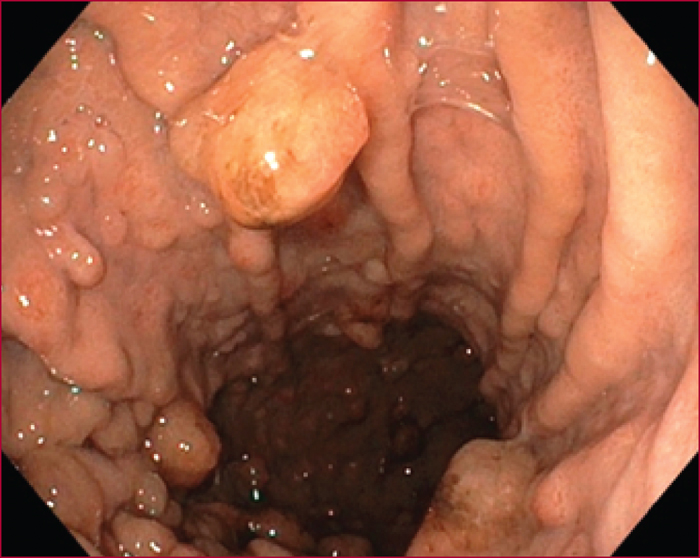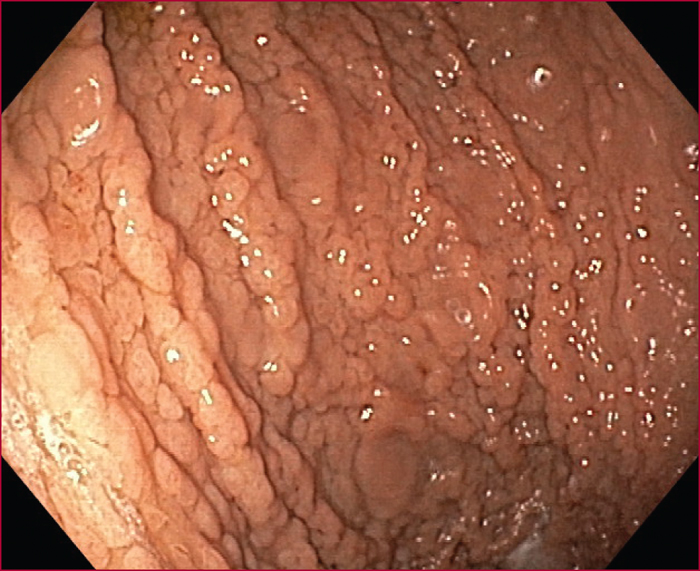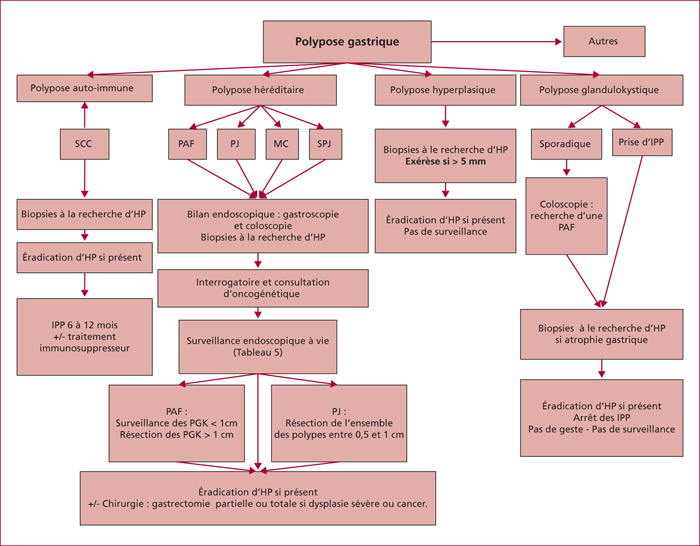Hépato-Gastro & Oncologie Digestive
MENUDiagnostic and management of gastric polyposis Volume 25, issue 1, Janvier 2018
Figures
Tables
service d’hépato-gastroentérologie,
101 avenue Henri Barbusse,
92140 Clamart, France
- Key words: gastric polyposis, risk factors, diagnosis, treatment, surveillance
- DOI : 10.1684/hpg.2017.1557
- Page(s) : 11-20
- Published in: 2018
Gastric polyposis is defined by more than ten gastric polyps. Discovered incidentally and generally asymptomatic, these polyps may be either hyperplastic or glandulo-cystic, or be part of an autoimmune disease or an hereditary polyposis syndrome.
During initial gastroscopy, gastric biopsies are conducted to search Helicobacter pylori in order to eradicate it and therefore to prevent dysplasia and cancer in patients with gastric atropthy or hereditary polyposis.
Interviewing the patient is essential to find iatrogenic treatment responsible of polyposis like the proton pump inhibitors. It also allows to detect patients who are likely to develop hereditary polyposis syndrome and thus need gastroscopy and colonoscopy to assess lesion extension. When diagnosis is confirmed, patients will receive an oncogenetic consultation to search for target mutations. Depending on polyposis, an endoscopic surveillance program will be proposed. The surveillance, tailored to each kind of polyposis syndrome must be lifelong.
![]() This work is licensed under a
Creative Commons Attribution-NonCommercial-NoDerivatives 4.0 International License
This work is licensed under a
Creative Commons Attribution-NonCommercial-NoDerivatives 4.0 International License




